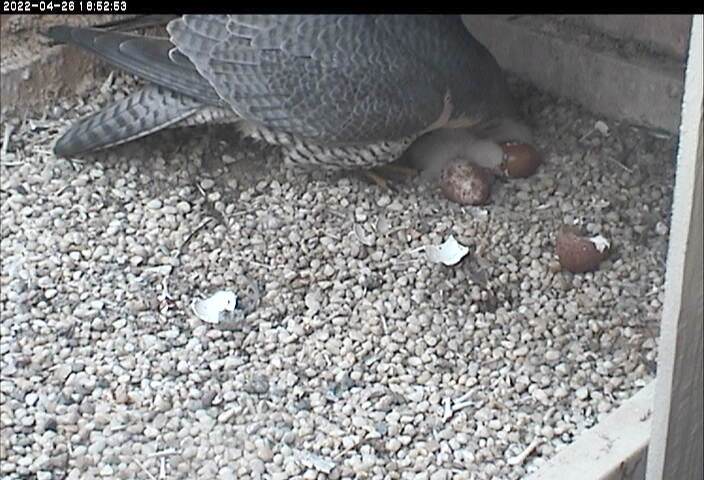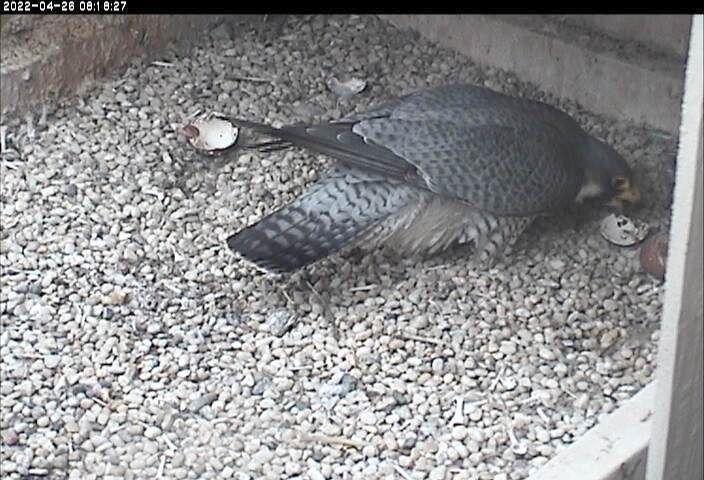
27 April 2022, 6am
Yesterday was an exciting day at the Cathedral of Learning peregrine nest. Three eggs hatched between midnight and 2:30pm and the fourth egg had a visible crack by 7:00pm (photo above). This morning I expect to see four chicks and only one egg remaining to hatch.
UPDATE 28 April, 5:30am: The visible crack must be an illusion. It was not evident in subsequent photos and the 4th egg was still in-egg on Wednesday evening. Oy! Will it hatch on Thurs 28 April? Watch the falconcam and see.
Glimpses of the tiny nestlings have been brief because Morela often stands in front of the streaming camera while she feeds them. The best views are from the snapshot camera but those are only still shots so I collected images from yesterday’s 4pm feeding and made them into a video. You’ll notice that Morela eats a little bit before she starts to feed the young.
Scattered eggshells? Are you wondering about the scattered eggshells on the gravel?
When a peregrine egg is hatching the mother bird does not help the chick open the egg but when it has emerged on its own the mother carefully lifts the discarded shell and sets it away from the scrape (the shallow bowl where the chicks and eggs reside). The photo above shows many discarded shell fragments.
- The shells are made of calcium carbonate deposited by the mother’s body.
- The color of peregrine eggs is embedded in the calcium. The color does not wash away but it is only on the surface. As you can see, the shells are white inside.
- Eggshells move around the gravel as the adult birds sweep in and out of the nest.
- The mother bird eventually eats the discarded shells to restore her calcium levels. Morela is eating a shell in the snapshot below.

What about the 4th and 5th eggs? I feel lucky to have predicted Hatch Day (26 April) for eggs #1-3. My original guess was 28 April for the 4th egg and 3 May for the 5th. But I could be very wrong.
Watch the Pitt peregrine family on the National Aviary falconcam at Univ of Pittsburgh to see what happens next.
(photos from the National Aviary falconcam at Univ of Pittsburgh)